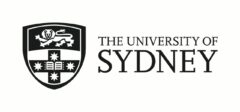[The following is a longer and un-footnoted draft of a fifth Policy Digest prepared for a Sydney Southeast Asia Centre joint research project and an ASEAN Secretariat project on harmonising consumer protection law. It is highly relevant also to Japan in light of Kanebo’s large-scale recall of some of its skin-whitening products across the region as well as in Japan in 2013.]
1. Introduction
Consumer goods associated with higher risks, and often also extent of harm, tend to generate public regulatory interventions. Food is one example, for which nation states have often legislation quite early on. However, national legislation and implementation is increasingly impacted by international law, particularly World Trade Organization (WTO) or bilateral and regional free trade agreements agreements insist that food safety measures be based on rational and proportionate public health risk assessments, and not constitute disguised trade barriers. This is facilitated by such agreements expressly stating such requirements will be presumed to be satisfied if the national measures are based on food standards agreed in the Codex Alimentarius, administered by two United Nations bodies. The Codex process has remained relatively unpoliticised, based instead on scientific risk assessments, partly because most countries both export and import foods but also because food is a necessity for everyone. This backdrop has also made it easier for other international and regional bodies, including ASEAN and APEC, to collaborate with national regulators and the private sector to develop shared food safety standards in Southeast Asia and world-wide.
Pharmaceuticals and, more recently and in a less interventionist way, cosmetics (goods without, necessarily, any medicinal properties) have also tended to generate regulatory regimes at the national level. At the international level, however, the WTO’s 1994 Technical Barriers to Trade (TBT) Agreement does not expressly create a presumption of conformity from adhering to standards set by specified bodies, when national regulators introduce measures applicable to imports. There is no counterpart to the Codex process; different countries and regions maintain more disparate approaches to assessing and regulating non-food sectors, partly because they may not be exporting as much as importing certain types of goods.
Overall, moreover, the United States (US) often adopts more lenient regulatory regimes compared to the European Union (EU). This is particularly noticeable with respect to cosmetics: the US relies much more on voluntary industry self-regulation (plus more threat of private lawsuits for product liability), whereas the EU favours more interventionist public regulation. Nonetheless, the EU’s 1976 Cosmetics Directive aimed to balance consumer protection with harmonized standards to facilitate cross-border trade, especially within and into Europe. Because the regulatory regime remains stricter than in the US, and EU’s cosmetics manufacturers are more likely to sell into the more regulated European markets than American manufacturers, the EU can also support European manufacturers by encouraging countries and regions in other parts of the world to “trade up” to the EU rather than laxer US regulatory approach, when developing their own laws and practices. Already, by 2004, the lists of ingredients set under the 1976 EU Cosmetics Directive had been adopted by 30 countries, including countries in South America party to the Mercosur and Andean Pact regional arrangements. Other countries, including China and India, have reproduced significant features of the EU model.
Furthermore, although this is not widely known, the EU model has been adopted in Southeast Asia through the “Agreement on the ASEAN Harmonized Cosmetics Regulatory Scheme”. This was signed in 2003 to advance the ASEAN Free Trade Area program, albeit also against the backdrop of the WTO’s TBT Agreement. Schedule A creates the ASEAN Mutual Recognition Arrangement of Product Registration Approvals for Cosmetics, allowing individual ASEAN Member States (AMSs) to agree with other AMSs to allow, without further requirements, the import of products that satisfy the regulatory requirements of the other state(s). However, any such mutual recognition agreements (anyway possible under the TBT Agreement) were envisaged as a temporary step towards harmonizing cosmetics regulation in the region. More importantly, under the 2003 Agreement (Art 2(3)) the AMSs committed to implement by 1 January 2008 the “ASEAN Cosmetics Directive” (ACD) set out in Schedule B. This closely tracks the EU Directive, including by requiring the AMSs to “adopt the Cosmetics Ingredients Listings of the EU Cosmetics Directive 76/768/EEC including the latest amendments”. Supported by the ASEAN-EU Programme for Regional Integration Support, by early 2008 six AMSs had started implementing the ASEAN Directive into their national laws, followed by Thailand, Cambodia, Laos and Myanmar a year and half later, and finally Indonesia from 2013. The ACD regime has therefore been described as “one of the first concrete instances of economic integration between ASEAN countries”.
Meanwhile, however, the EU itself replaced its Directive in 2009 with a Cosmetics Regulation, which on 11 July 2013 came into direct effect in the (now 27) EU member states, rather than having to be implemented by national legislation – sometimes not straightforwardly – as occurs when harmonisation is attempted by means of a Directive. The EU Regulation similarly attempts to enhance cross-border trade through harmonisation, expanding consumer choice while respecting public health, for example by adding new requirements to label cosmetics (such as suncreens) that include nano-particles.
Part 2 below therefore takes a closer link at key features of the ACD, including some differences that remain compared to the original EU model (and especially the US regulatory regime), as well as implementation and other challenges. As elaborated in Part 3, as well as various concrete improvements that could be made to this approach for harmonizing consumer product safety law, the model might eventually be extended to other sectors and anyway is relevant to general consumer regulators, even if the primary jurisdiction over cosmetics usually remains with health officials.
Continue reading “Cosmetics regulation under national and ASEAN law”
